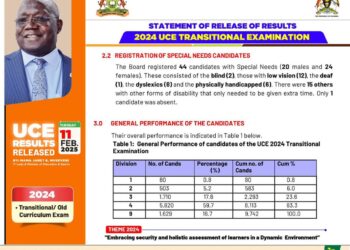It is now without a doubt that Uganda’s economy is feeling the pinch of the COVID-19 pandemic. The further reduction of the official interest rate down to 8 percent from 9 percent is evident that the central bank is responding to the adverse effects of the COVID-19 pandemic on the economy. This move is orthodoxly used by the central bank to stimulate growth, usually private sector growth. It is aimed at making borrowing of credit for investment cheaper for the private sector.
However, given the uncertainty of tomorrow, a layman would wonder why the central bank should take such a measure in the current circumstances. In other words it does not make sense to borrow to make investments during this time of uncertainty. Nonetheless, the Bank of Uganda’s current decision on the interest rate is to remedy the shocks of the COVID-19 in the short run but with long term viewpoint of the economy.
The dampening of the central bank rate should curtail inflation of prices of volatile commodities such as food, fuel and petroleum products etc. given that the disruption of the supply chains by lock downs. Further, the closure of Kenya’s border which is a critical point of entry and exit for exports and imports and grounding of planes following the closure of airports has also exacerbated the scarcity of consumptive items.
On the other hand, government borrowing from the domestic market is much more plausible at this moment in the short run, since the private businesses are cautious to borrow due to the risks from the uncertainties that the coronavirus pandemic has imposed on the economy. More so, given the short fall in tax revenue collections in the previous financial year 2019/20, government is in dire need of money to meet its expenditure plans for the fiscal year 2020/21 which have now bulged with immediate expenditure needs such as food relief for the poor, new medical equipment to manage the virus, expertise costs etc. during this vexing time.
Thus, a lower interest rate would create an enabling environment for the government to borrow from the domestic banks to meet these obligations. It would also minimize the debt distress of servicing loans with high interest payments. Away from this, the aftermath effects of the COVID-19 pandemic should be lingering. Uganda’s economy is largely run by the Medium Small and Micro Enterprises (MSME’s) which are currently operating below capacity due to their labor intensive technology. These have either closed production fully or partially despite the directive to operate but because of the need to circumvent the risk of exposing the workers to the virus.
The dwindling demand for consumption of non-essential commodities amongst a rational populous both locally and internationally has also affected their operations. This is also eating into their profits. Furthermore, the traders of non-agro commodities in the various towns whose shops have remained closed during this period are also in this same fix. As such, the long term horizon of this policy is intended to stimulate private sector growth when normalcy begins in the following ways: (1) Rather than seek bail outs from government when the tide is calm, a lower interest rate should induce the commercial banks to lend to the private sector at cheaper rates. (2) The policy will also intervene in ensuring job creation at the factories as a result of the low cost of credit. (3) For continuity of business operations, the traders are expected to borrow to remain afloat. Therefore, the Bank of Uganda’s intervention into the economy with a reduction of the Central Bank Rate to 8 percent is a prudent move to ensure macroeconomic stability in the country both in the short run and in the long run. However, this policy should be complemented with a commensurate fiscal policy.
Writer: Ronald Ochen is a Research Economist at Makerere University.
Tell: (+256) 752 383 422
Do you have a story in your community or an opinion to share with us: Email us at editorial@watchdoguganda.com











